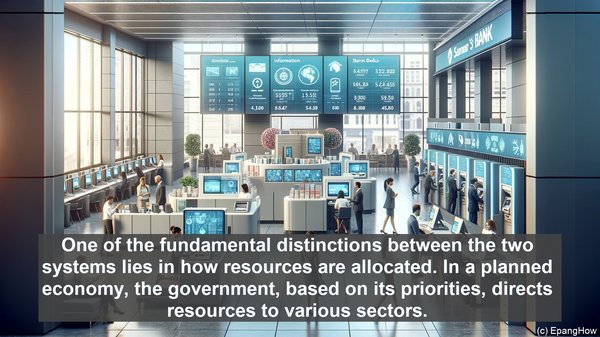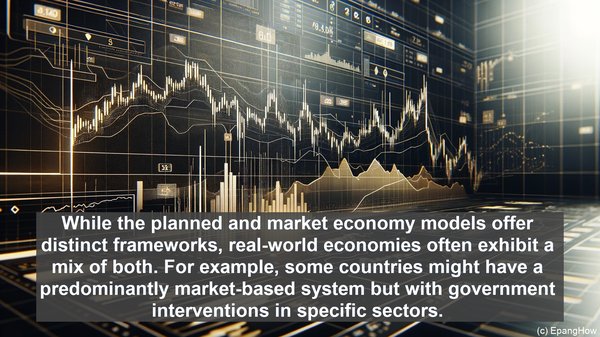Introduction: The Economic Landscape
Hello everyone, welcome to today’s discussion on the intriguing world of economic systems. From the centrally planned economies of the past to the dynamic market-driven systems of today, the way societies organize their resources and production has a profound impact on our lives. Today, we’ll be focusing on two prominent models: the planned economy and the market economy. Let’s dive in!
Planned Economy: A Centralized Approach
In a planned economy, also known as a command or centrally planned economy, the government assumes a central role in decision-making. Here, the state, often through a planning agency, determines what goods and services are produced, the quantity, and the distribution. The primary goal is to achieve equitable distribution and meet societal needs. This approach often involves detailed long-term plans, with the government controlling key industries and resources.

Market Economy: The Forces of Supply and Demand
Contrasting the planned economy, a market economy operates on the principles of supply and demand. Here, the decisions regarding production, distribution, and pricing are primarily driven by the interactions of buyers and sellers. The market, comprising individuals, businesses, and other entities, determines what is produced, how much, and at what price. This decentralized approach is often associated with the concept of laissez-faire, where the government’s role is limited, primarily focusing on maintaining competition and ensuring fair trade.

Allocation of Resources: Central Planning vs. Price Mechanism
One of the fundamental distinctions between the two systems lies in how resources are allocated. In a planned economy, the government, based on its priorities, directs resources to various sectors. This top-down approach aims to ensure a balanced development and meet societal goals. On the other hand, in a market economy, the price mechanism plays a crucial role. As demand for a particular good or service increases, so does its price. This, in turn, incentivizes producers to allocate more resources to its production, ultimately balancing supply and demand.
Efficiency and Innovation: A Trade-off
Efficiency and innovation are key considerations in any economic system. In a planned economy, with central decision-making, there is a potential for streamlined resource allocation and coordination. However, the lack of market competition can sometimes hinder innovation and responsiveness to changing consumer preferences. In a market economy, the competition-driven environment often fosters innovation and efficiency. However, the absence of centralized coordination can lead to market failures and inequalities.
Flexibility and Adaptability: Navigating Change
The ability to adapt to changing circumstances is crucial in today’s dynamic world. Here, market economies often have an advantage. The decentralized nature allows for quicker responses to shifts in demand or supply, ensuring a more fluid system. In a planned economy, changes in production or resource allocation might require significant bureaucratic processes, potentially leading to delays or inefficiencies.
Social Welfare and Equity: Balancing Priorities
While both systems have their approaches to social welfare, the emphasis and mechanisms differ. In a planned economy, the focus is often on equitable distribution, with the government playing a direct role in providing essential services and goods. In a market economy, the concept of social welfare is often intertwined with the idea of individual responsibility. Here, mechanisms such as taxation and social safety nets aim to provide a safety net while maintaining the principles of free enterprise.
Real-World Examples: Shades of Gray
While the planned and market economy models offer distinct frameworks, real-world economies often exhibit a mix of both. For example, some countries might have a predominantly market-based system but with government interventions in specific sectors. These hybrid models aim to combine the advantages of both approaches while mitigating their drawbacks. Understanding the nuances of these systems is crucial in analyzing and navigating the complexities of global economies.
